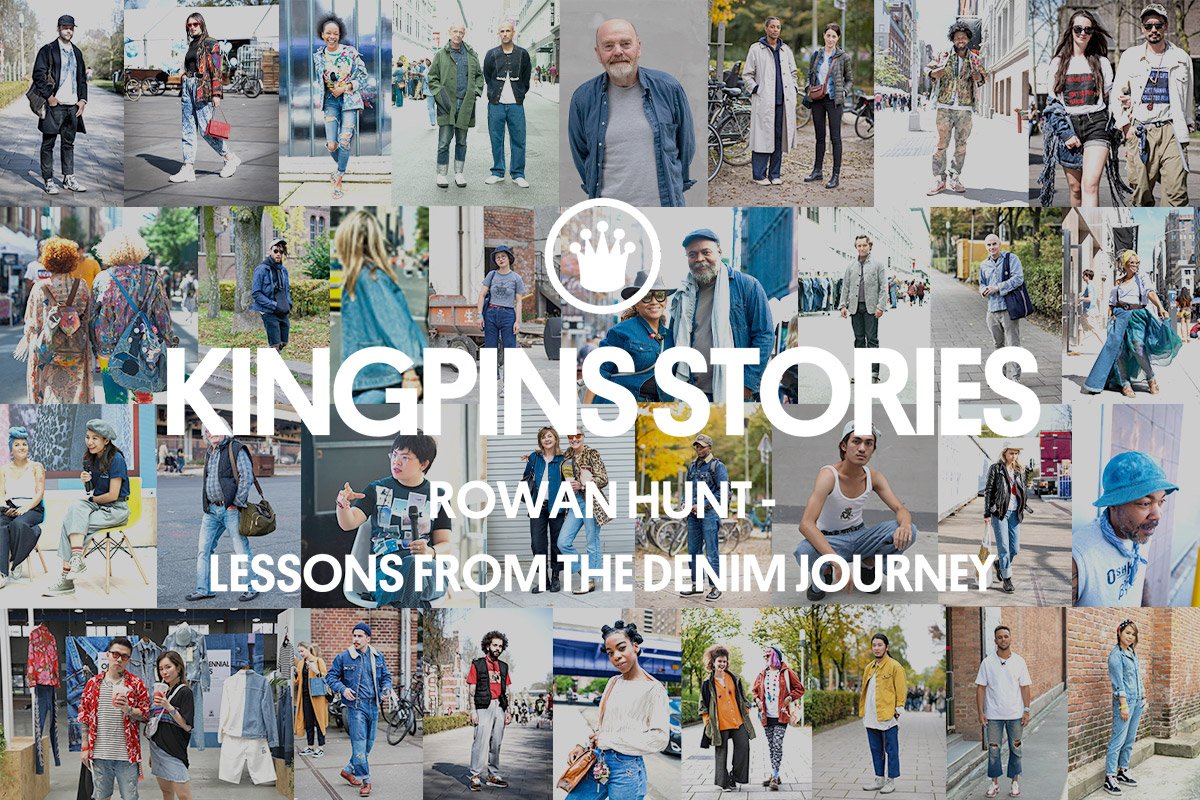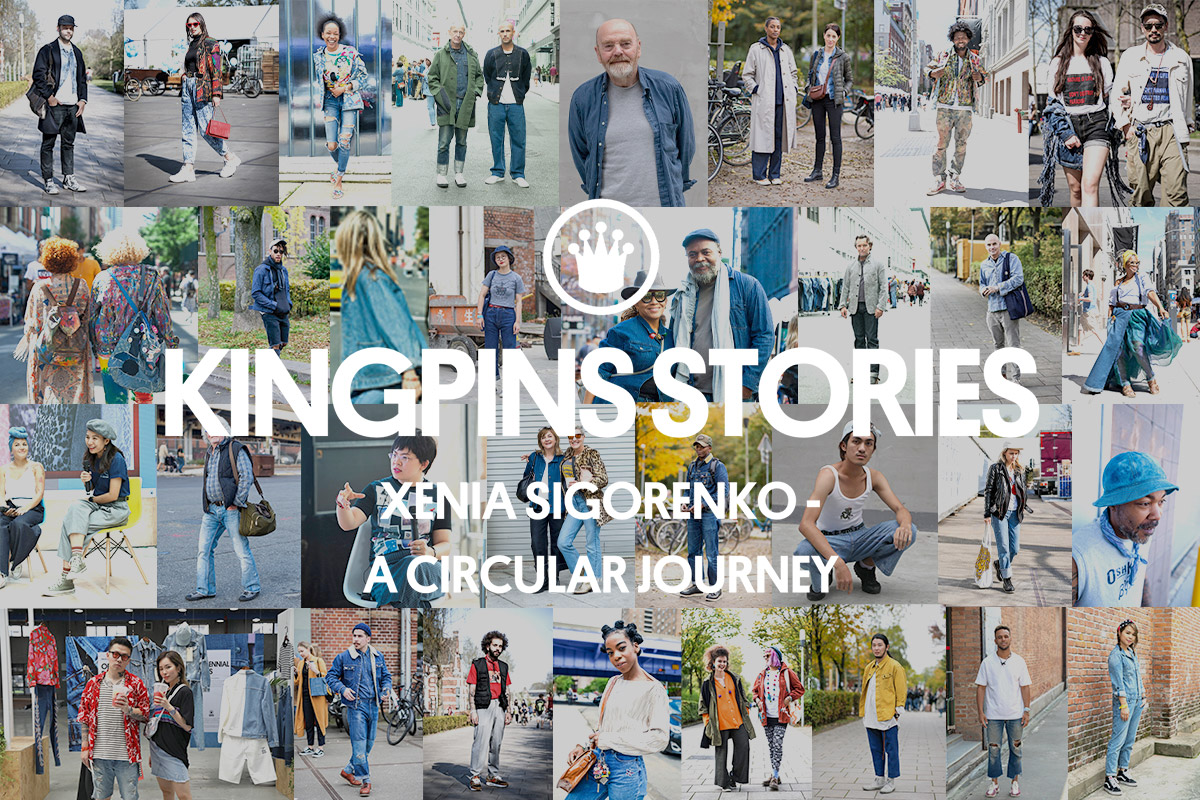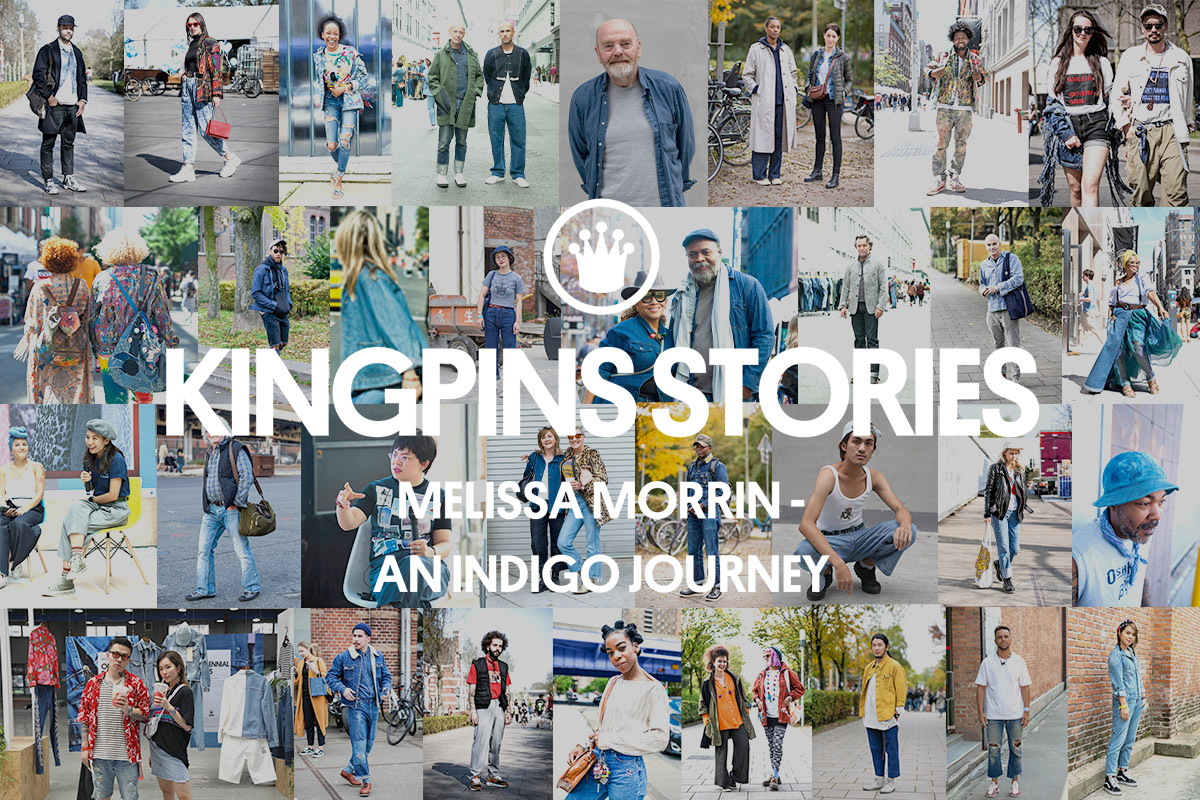Kingpins Stories: Franky Vangaever – 33 Years at Levi Strauss & Co. (Pt. 2 of 2)
FRANKY VANGAEVER, Denim & Textile-Industry Expert, worked 33 years at Levi Strauss & Co.
Part 2 – Denim Evolution and Lessons Learned
Denim and indigo both are an integral part of my personal and professional life. I’m one of those denim diehards that is not in favor of stretch —I want ‘“the real stuff.” Half of my wardrobe is filled with selvedge denim, produced with great yarn shapes and robust constructions, with a natural cotton-feel and technical strength. Nothing beats natural cotton denim.
So much has changed in our industry during the last four decades. Styles and fabrics come and go, but the processing of a jean is evolutionary.
THE EIGHTIES
Back in the mid 80s, when I started working for Levi’s, many denim fabrics were produced using open-end yarns and garment finishing was simply a rinse, a stone wash or a stone-bleach.Chemical suppliers did not have denim-specific auxiliaries and specialty chemicals, nor did they have the knowledge. All research and innovation was done in our internal R&D Lab, relying on our own creativity and knowledge. We were explorers, working where no one had worked before.
Denim finishing was born from this and from those days forward, the way a jean was finished became critical to its marketing and sales. Snow wash (a.k.a. acid wash) appeared in all styles of denim apparel as did tie-dye with bleach. And then abrasion started with permanganate spray, followed by sandblasting, brushing, and scraping or hand-sanding. We developed fully automated and safe sandblasting machines, which were implemented within our supply chain.
That was just the beginning. The next three decades saw an explosion in options for finishing jeans:
THE NINETIES
In the 90s, the industry began developing more specialized chemistry and advanced technologies.
Our mission was to reproduce the look of old, worn jeans. This was a time of high demand from design for more authenticity and replicas of vintage denim jeans. Therefore new and more advanced finishing chemistry and technologies had to be used. These were huge changes!
We were using enzymes for stonewashing and biopolishing to create distressed looks; there were dyes for authentic coloring the denim; new bleaching systems (including eroxides, persulfates, glucose and laccases) providing different shade and cast, and hand modifiers to give the product an authentic “soapy” vintage handle. For the more fashionable designs, we started printing and painting graphics on denim garments and jackets.
Levi Strauss was one of the first brands to ban sandblasting due to silicosis, the occupational lung disease caused by inhalation of crystalline silica dust from the process. We proudly collaborated with machine-supplierTonello to create automated and ergonomic brush-machines to do all those operations.
We started exploring the idea of finishing denim with lasers but back in 1995, none of us could imagine what the future would be for laser finishing technology. We also developed shaped rubber molds to create specific whisker patterns.
Resin finish application became important in this decade to create rich indigo and open construction fabric looks. We were very successful with flat stay-press and easy-care denim pants and shirts — a new idea in the market. By the end of the decade, we were making 3D shaped garments and jackets, as well as flat-pressed fashionable looks created with local or all-over shiny and matte-top-coating sprays, colored pigments and glitters.

THE AUGHTS
With the new millennia, we started upgrading our key supply chain locations, building dedicated development labs in their facilities. Those evolved into Levi’s creative innovation areas, which are still in use today.
This was a time of educational outreach and collaboration.
Levi’s created the Denim Finishing Academy as well an E-Learning program, and began providing on-site training in denim finishing, mnual applications and how to create seasonal inspirational collections. Also, some of our advanced Italian chemical suppliers created dedicated development areas where their customers could explore new innovations in chemistry and develop collections.
We had great collaborations with our supply chain partners, organizing Creative Innovation Workshops with finishing facilities, fabric mills, chemical suppliers and machinery suppliers. Every season, we organized an internal Mill & Finishing Week, where our supply chain partners could present all that innovation work for the design teams.
This was the era when ozone became important. We established new safety guidelines, screened and modified equipment, which was then implemented into the production facilities.
For very advanced super-premium washing, technologies such as LLR super-stone washes, and virtual mercerized caustic looks were used, creating amazing irregular denim vintage patterns with the brightest indigo and open-construction looks.
The use of stretch increased, including for men’s denim.
Performance technologies and chemistry became fashionable such as durable water- and stain-repellency, super-soft comfort and well-being applications to give the product moisturizing or anti-odor properties.
On the advice of multiple chemical scientists, we developed the first apparel RSL list, implemented it into the supply chain and shared with other brands.
By 2005, we were exploring bio-chemistry from waste-streams. We created the first 100% organic collection with Garmon using GOTS-certified fabric, finishing and raw materials. It was super exciting and advanced, but it would be a few years before the consumer joined the industry in moving in a sustainable direction.
THE 2010S
In 2010s,our whole industry changed course as the focus turned to sustainability, ecology and human health in all aspects of denim processing.
We researched ecological application technologies, chemistry and raw materials. It was a time of automated machinery to save energy and the development of efficient applications to conserve water through lower liquor ratios, reducing chemicals through machine spray-nebulize application technologies. Lasers began replacing the manual abrasion operations. Tonello created a stone-free solution that featured removable abrasive plates that fit into the washing extractors.
Chemical management was also a high focus, moving from limitation towards elimination through the MRSL and the introduction of several stewardship-certification standards. We developed the Full Material Disclosure hazard elimination systems, screened chemistry for auxiliaries, and in-screen for commodities.
TODAY AND THE FUTURE
The innovation goes on. There are new foam-gel dyes and bleaches; low-temperature curing resins, polymers and chemistry; boosters and catalysts towards ecological halogen-free bleach enzyme and stone-free stonewash looks, local abrasion enhancement and permanganate elimination. Powder indigo dye and salt byproducts are being replaced with more human and environmentally friendly alternatives like liquid indigo.
The industry is looking at the bio-chemistry of using waste stream ingredients and finding super sustainable alternatives to traditional softeners and surfactants, moisture management and even some pfc-based technologies.
The next step for the industry is to implement these sustainable technologies and solutions. This will include an expansion of recycled raw materials including natural and synthetic fibers via mechanical and chemical systems. The collection, quality, separation and origin remain big challenges, especially for synthetic blends, but this is a must for the long-term future of our business.
Franky Vangaever is the founder of the RESPONSIBLE Textile Innovation consultancy, which collaborates with innovative companies, brands and organizations taking responsible and conscious decisions towards best-in-class sustainable innovation.
Did you miss part 1 of Franky’s story? You can find it HERE


